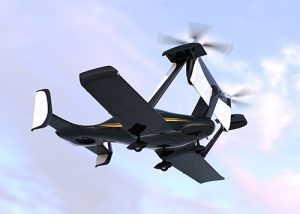 Last year I wrote about flying cars. The first flying car school had just opened in rural Roosevelt, Utah to teach people to fly the Pal-V Liberty from the Dutch company Pal-V. I wrote about the idea that individuals would soon be able to drive a combination car/plane. There are still questions about FAA licensing, training, and potential safety regulations. Pal-V is one of several companies worldwide that are working on these flying cars.
Last year I wrote about flying cars. The first flying car school had just opened in rural Roosevelt, Utah to teach people to fly the Pal-V Liberty from the Dutch company Pal-V. I wrote about the idea that individuals would soon be able to drive a combination car/plane. There are still questions about FAA licensing, training, and potential safety regulations. Pal-V is one of several companies worldwide that are working on these flying cars.
Airbus division A3 recently announced they will begin testing pilotless air-taxis this fall from an air hanger in Pendleton, Oregon. Competitors, including Boeing, are testing this same idea for autonomous short-range flight. There are a number of technologies converging on the problem of breaking traffic jams and I will highlight some of these in this blog.
The Jetsons Meet Uber
The Jetsons animated cartoon from the early 1960s portrayed a space age family that had flying cars, robots, and video-conferencing systems. I believe this show and others at the time helped shape our vision of what is possible in travel and everyday commuting. Once cutting edge, technologies such as electric cars and autonomous vehicles are giving way to experimentation with flying cars and autonomous planes, and several companies are hoping to have a commercial product available as early as 2020.
All of this is made possible by technologies such as cloud computing, Internet of Things (IoT), and advanced battery development. In the case of Uber, they quickly went from a ride hailing service using smartphone and GPS technology to testing autonomous taxis in an experiment with Volvo. The next step for them, as with Boeing and Airbus, is autonomous, flying taxis through their Elevate program.
So Close but yet so Far
I have not yet seen any unpiloted planes over my house but they will soon make test flights at rural airports like that in Pendleton. A number of these experiments are with vertical take off and landing (VTOL) crafts. This means that they can take off and land like a helicopter but fly like a plane. While they are not as large as a helicopter they still need room to maneuver so will need a field or a helipad. There are logistical problems to overcome, like a lack of helipads, what airspace they will fly in, reliability and safety. The anticipated 2020 commercial service launch is not that far away so these issues will have to be worked out soon.
Thoughts
Would you be the first passenger in a driverless flying taxi? How might they change our cities? Would people choose to live in rural areas knowing they could easily get to work or would they continue to flock to urban centers as they are doing now? How would this technology change our lives? I am excited for the future. Let me know your thoughts.
Kelly Brown is an IT professional and assistant professor of practice for the UO Applied Information Management Master’s Degree Program. He writes about IT and business topics that keep him up at night.

